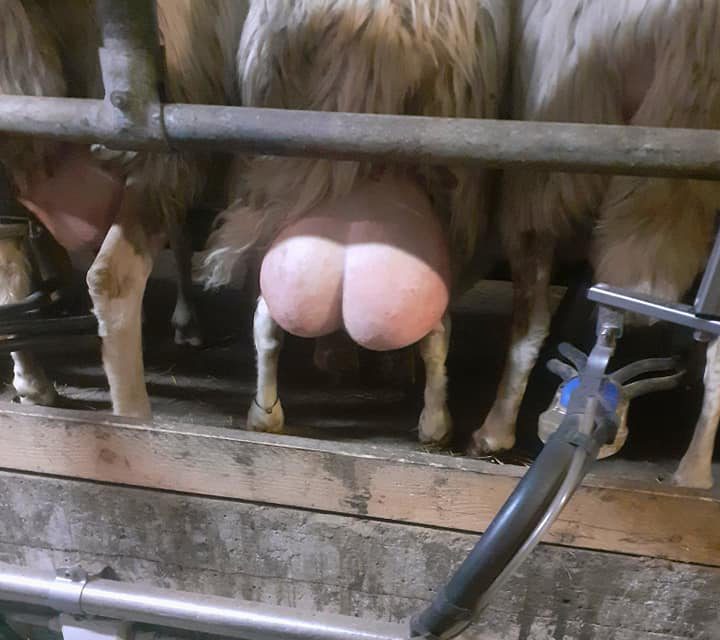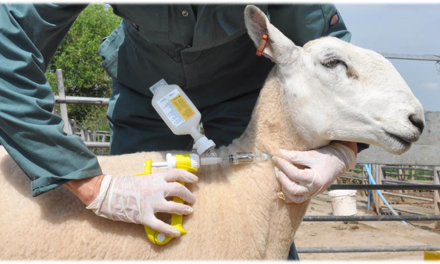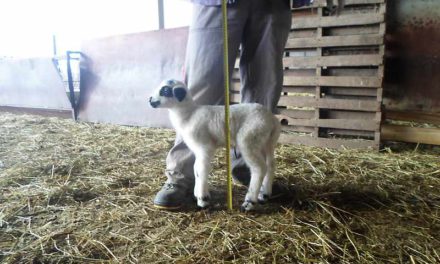This post is also available in:
![]()
![]()
![]()
![]()
![]()
![]()
Appraisal of udder morphology to prevent high somatic cell count and mastitis
Solution name: Appraisal of udder morphology to prevent high somatic cell count and mastitisAppraisal of udder morphology to prevent high somatic cell count and mastitis
Aim: Identify ewes with udders at highest risk of mammary inflammation/infection or producing milk with high somatic cell count (SCC)
Description:
Use of a 9 points linear scale to evaluate 3 udder morphology traits related to udder health.
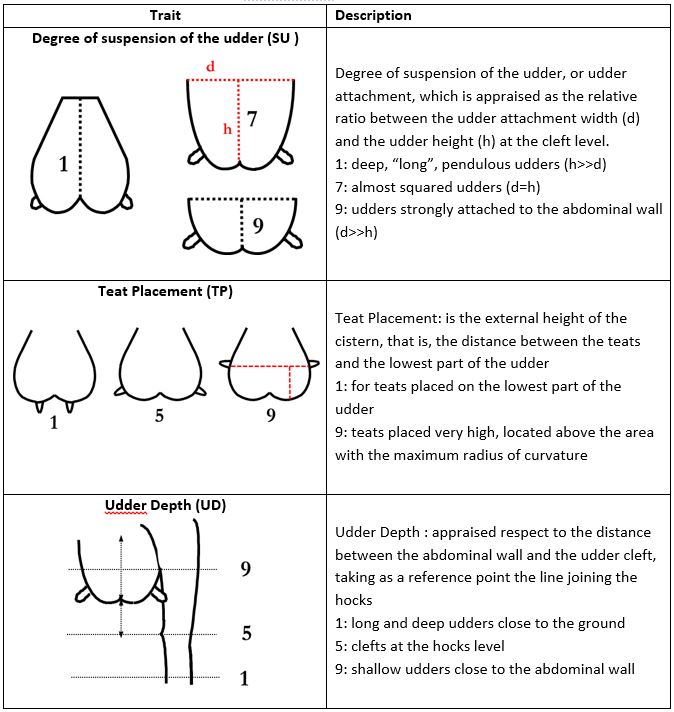
The appraisal of udder morphology traits on the basis of the proposed scale has 2 purposes:
– it is an effective practice for the choice of animals to keep in production (voluntary culling)
– it is the basis of the genetic evaluation of breeding animals for the selection of udder morphology for the improvement of animal health, functional longevity and aptitude to mechanical milking (selection)
Topic: health
Production: Dairy
Animal Category: Adult
Issue: Clinical mastitis (abnormal milk, swelling or redness of the udder) or subclinical mastitis (high somatic cell count -SCC- in milk)
Level of Solution: Practical
Country: Italy
How to implement it
Udder scoring should be performed early during the animal’s productive career, preferably on first lactating ewes. It must be performed before milking, preferably with animals placed in the milking parlor.
Suggested criteria for voluntary culling should consider the following:
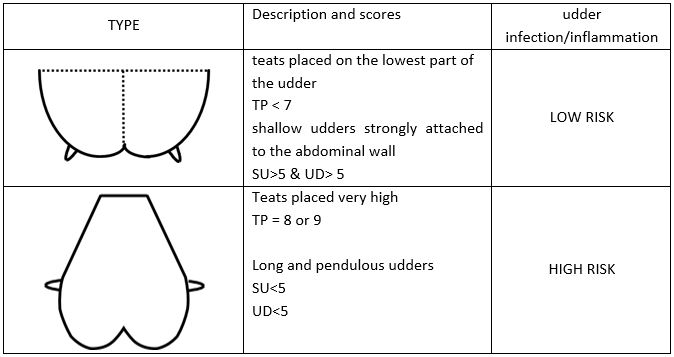
Expected benefits
Reduction of mastitis incidence and somatic cell count.
Better efficiency of the machine milking.
Cost Benefit analysis
High relative profitability is expected from the application of this solution. The costs are relatively small mainly if the farmer realizes the udder appraisal by himself. On the other hand, large savings in the use of antibiotics and higher incomes may be realized.
Sustainability analysis
The most important effects on the sustainability is the reduction in the use of antibiotics and the increase in feed efficiency with positive effects on emissions and air quality and the use of materials and energy.
Improved animal welfare and farmer “image” are other important expected benefits.
Prerequisites and/or limits
Training course of the farmers about appraisal method.

